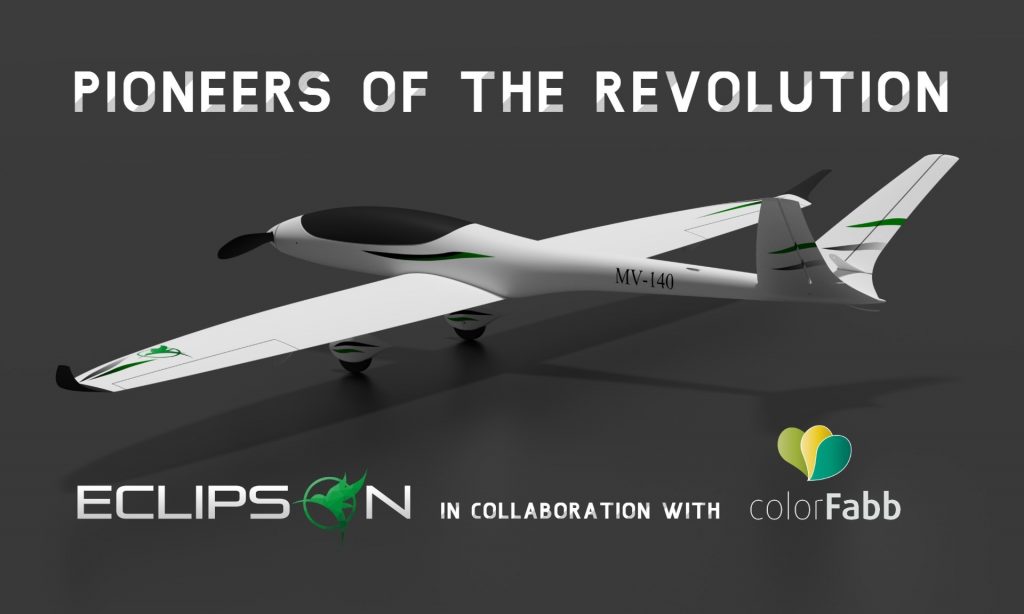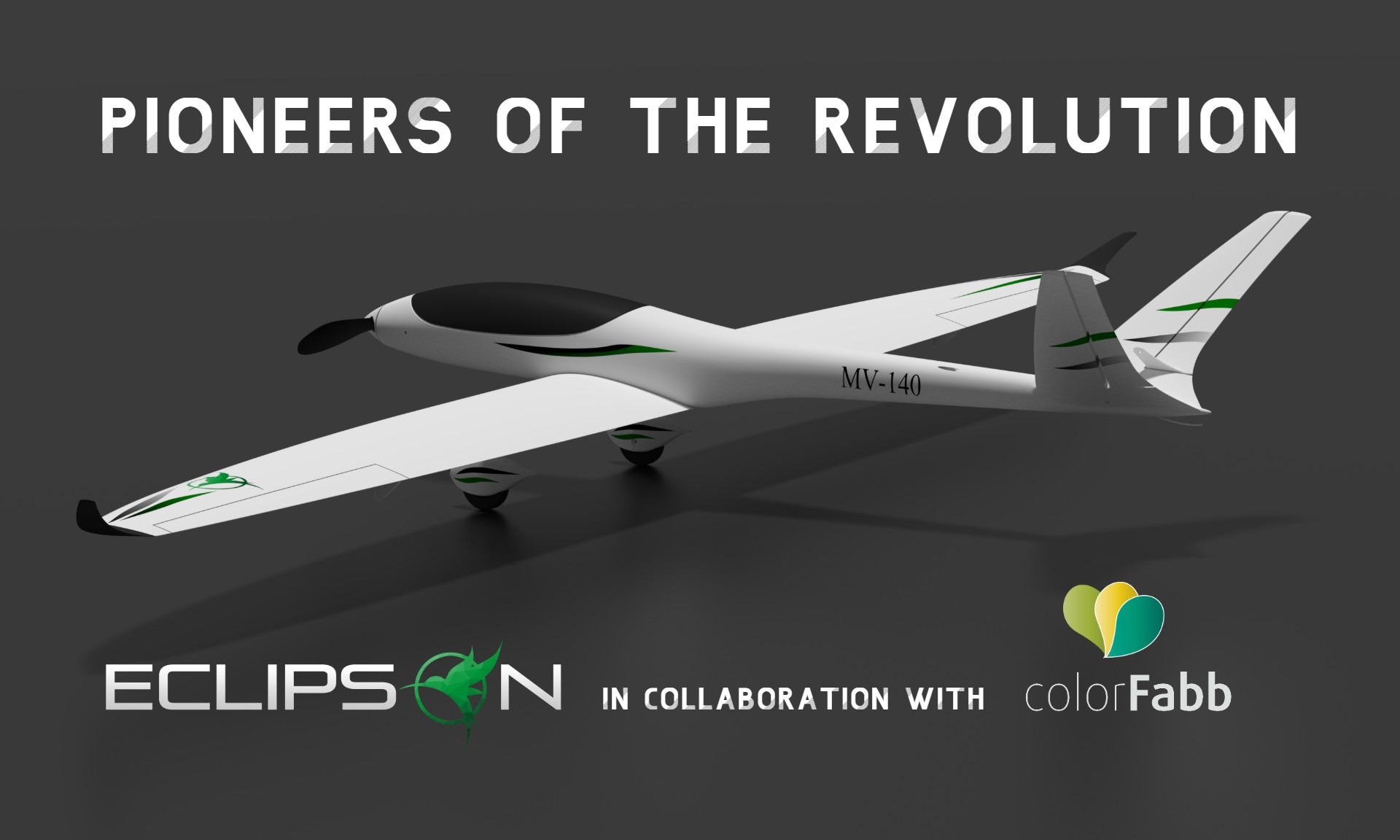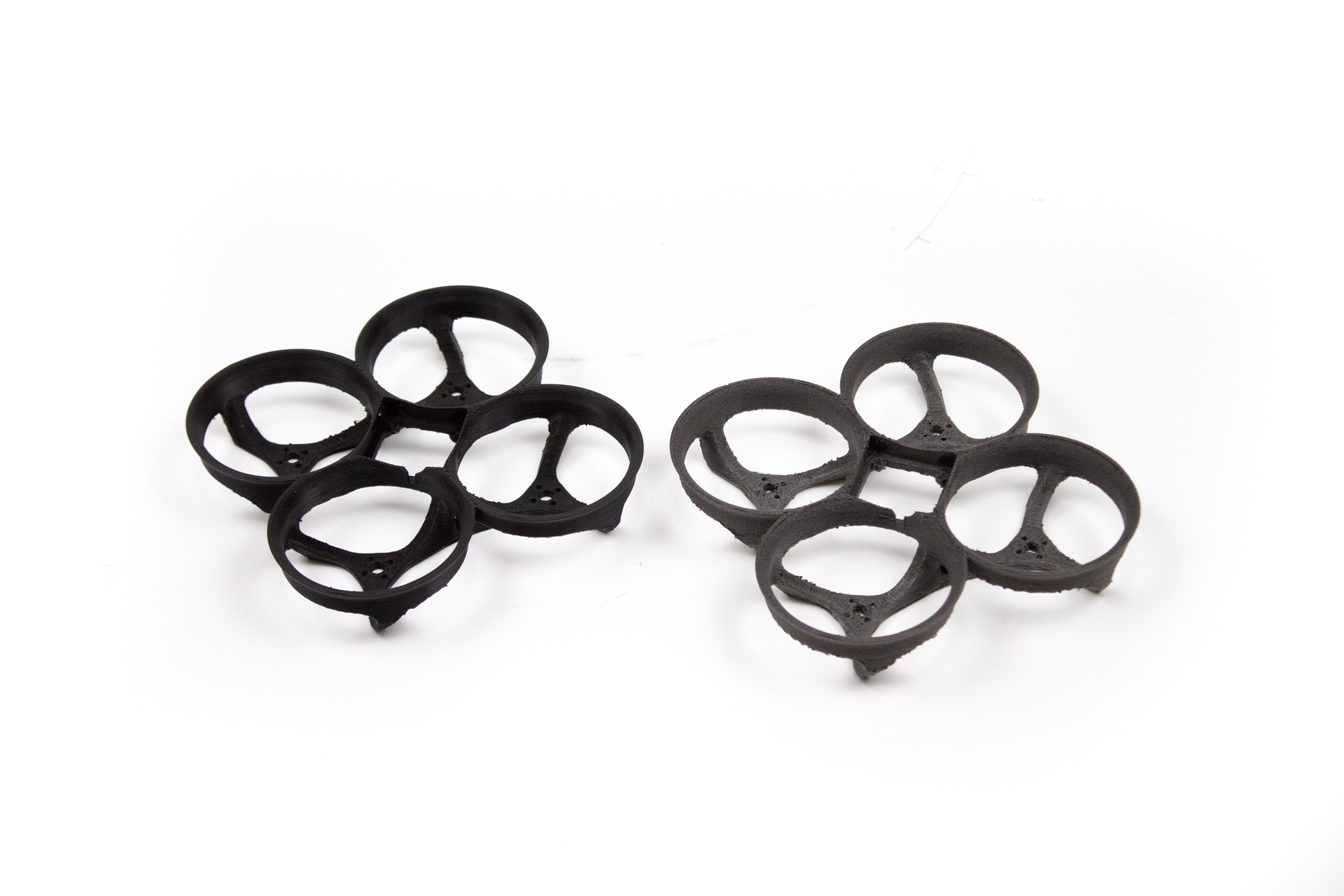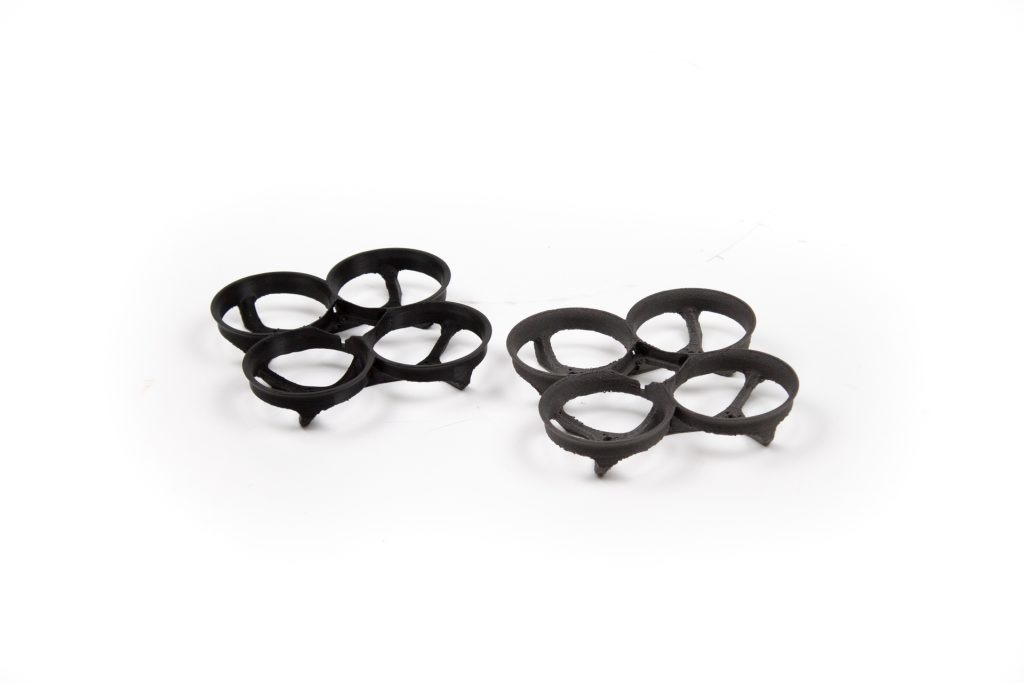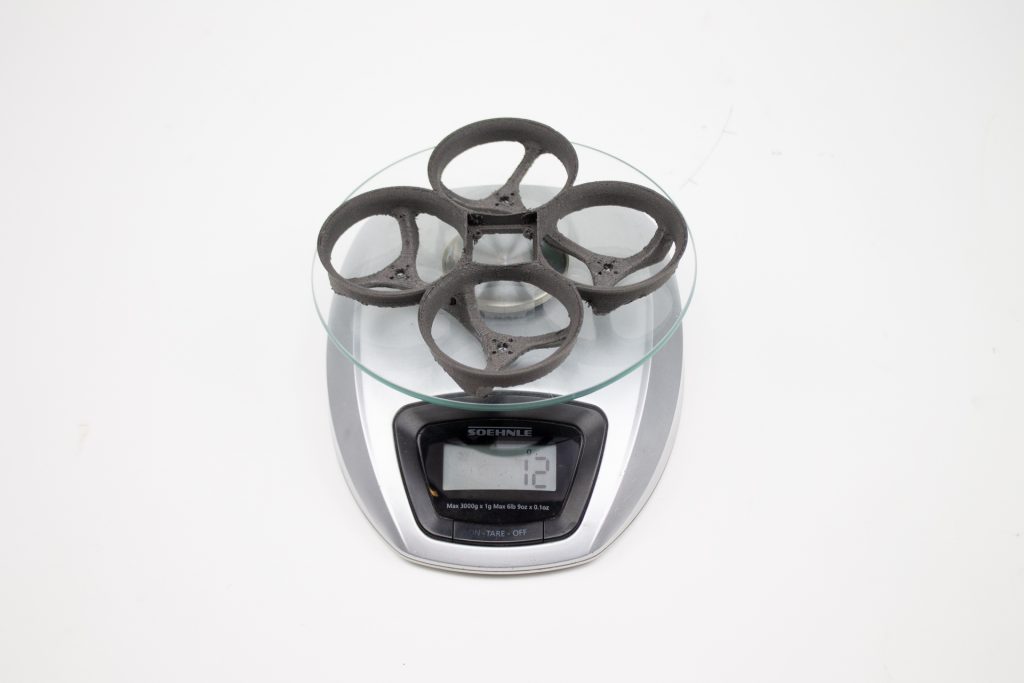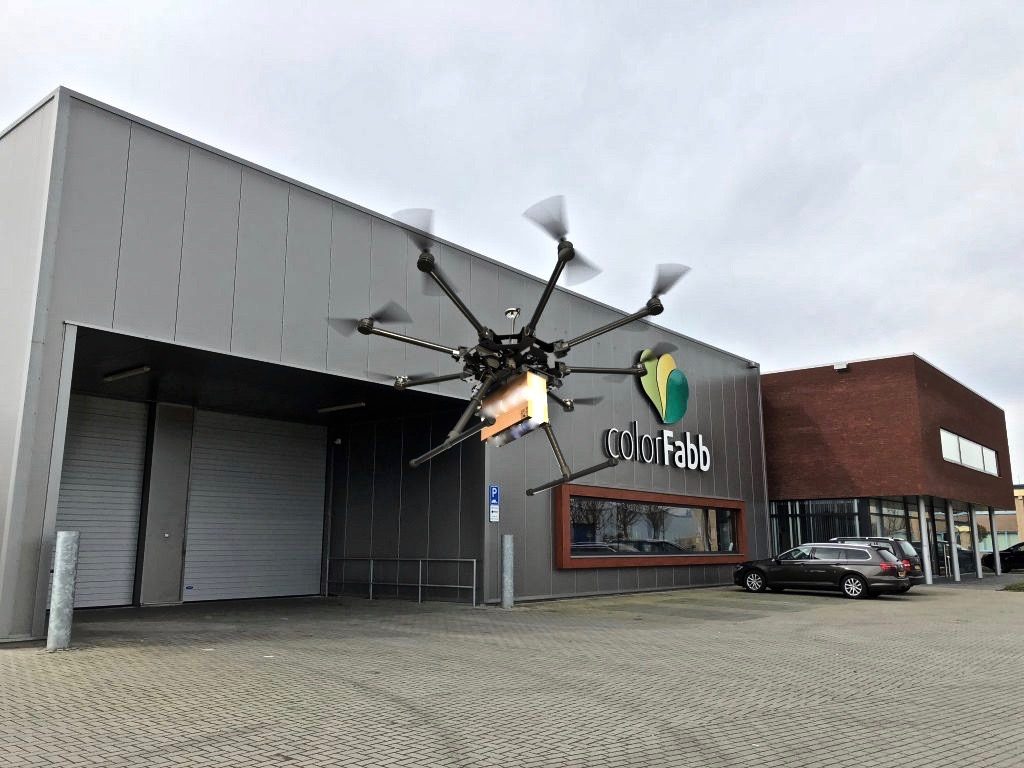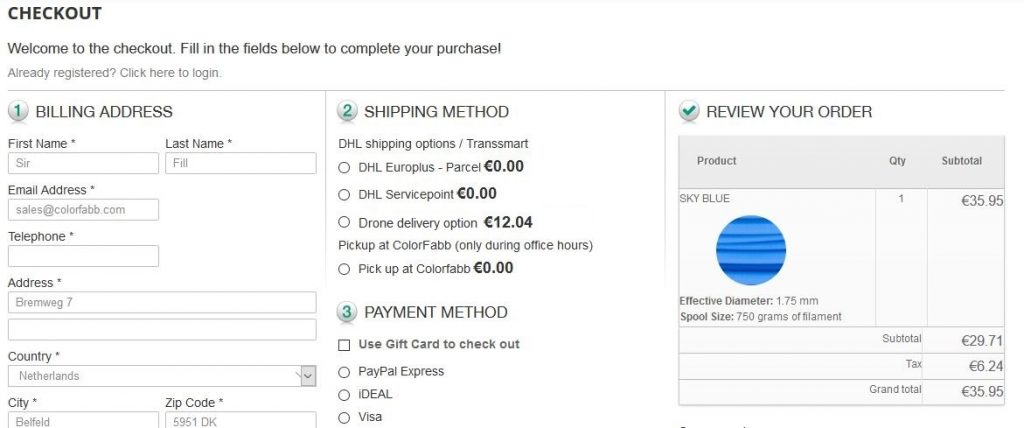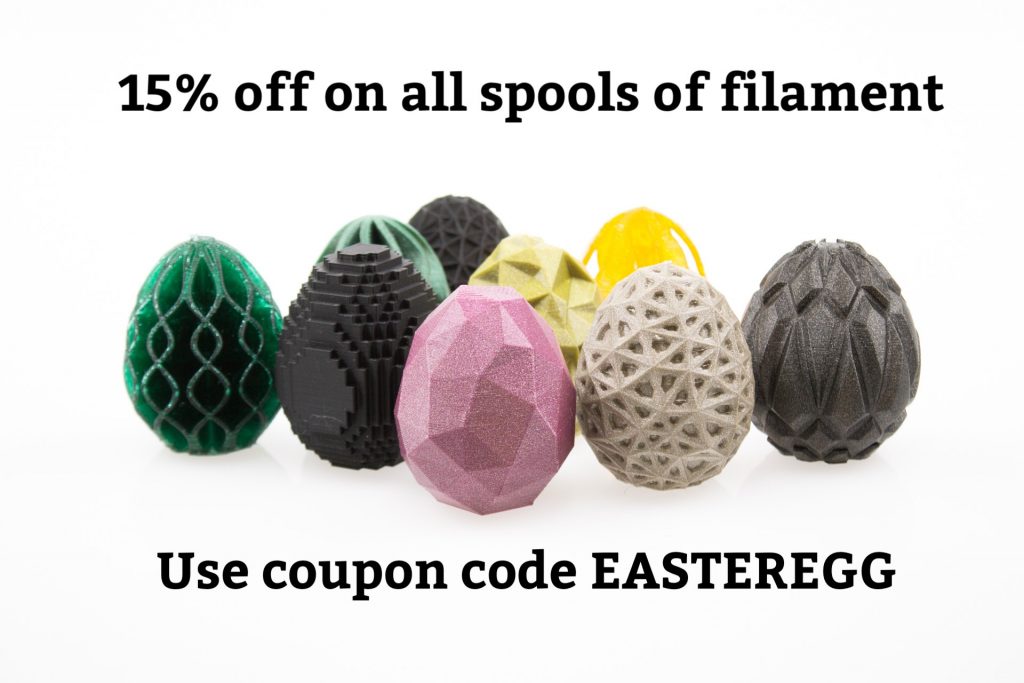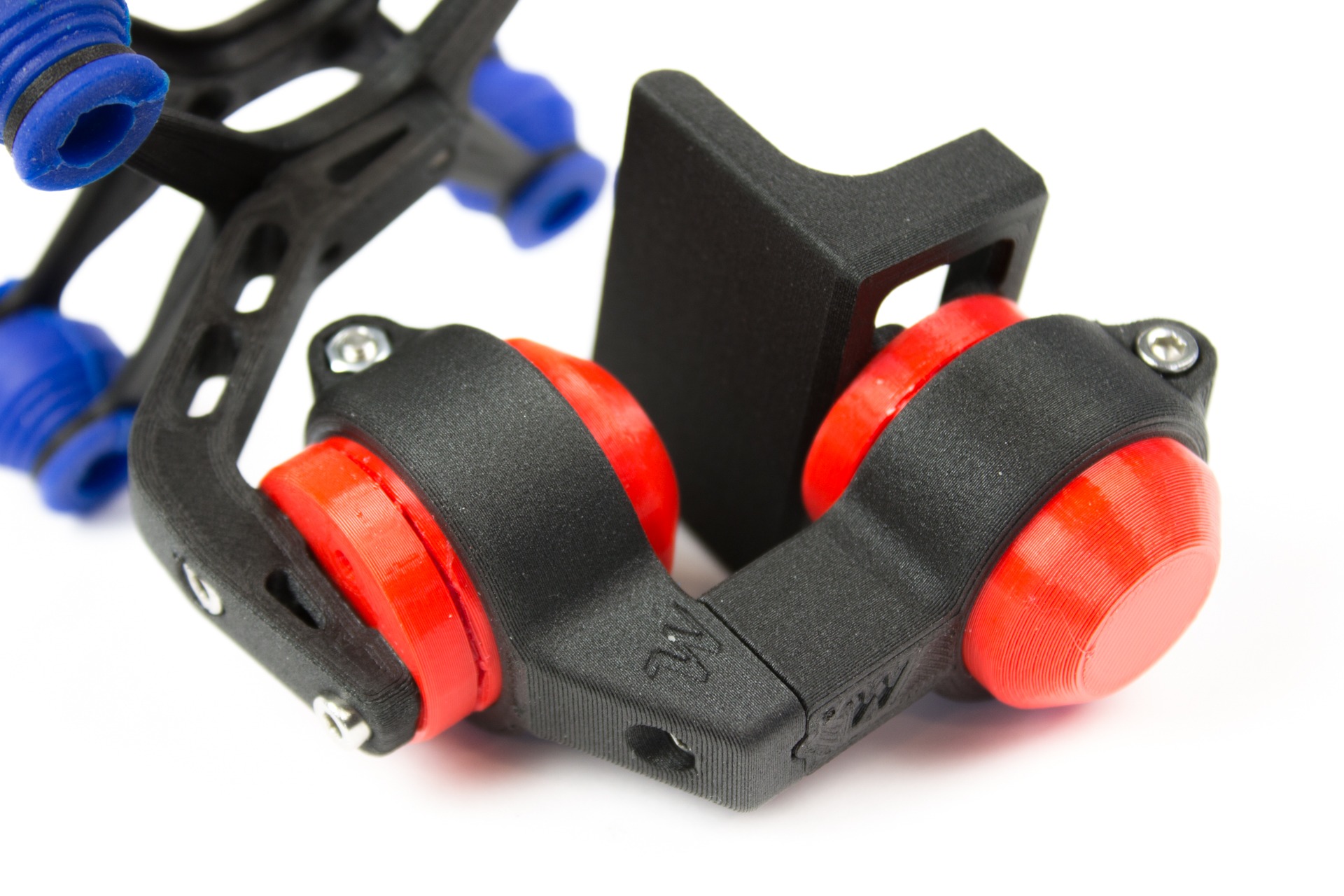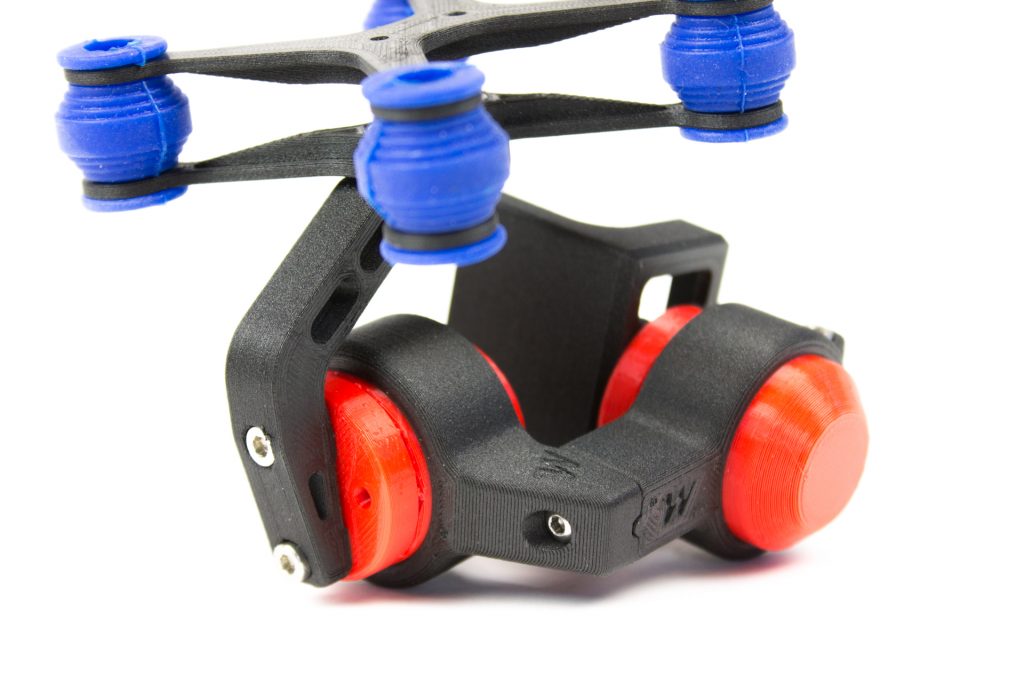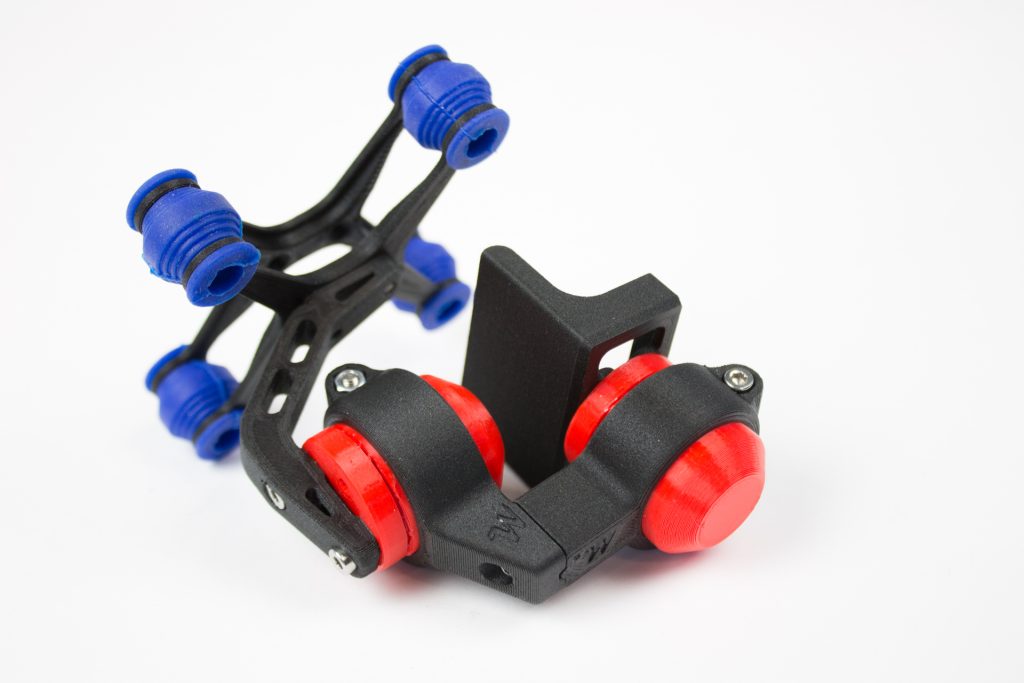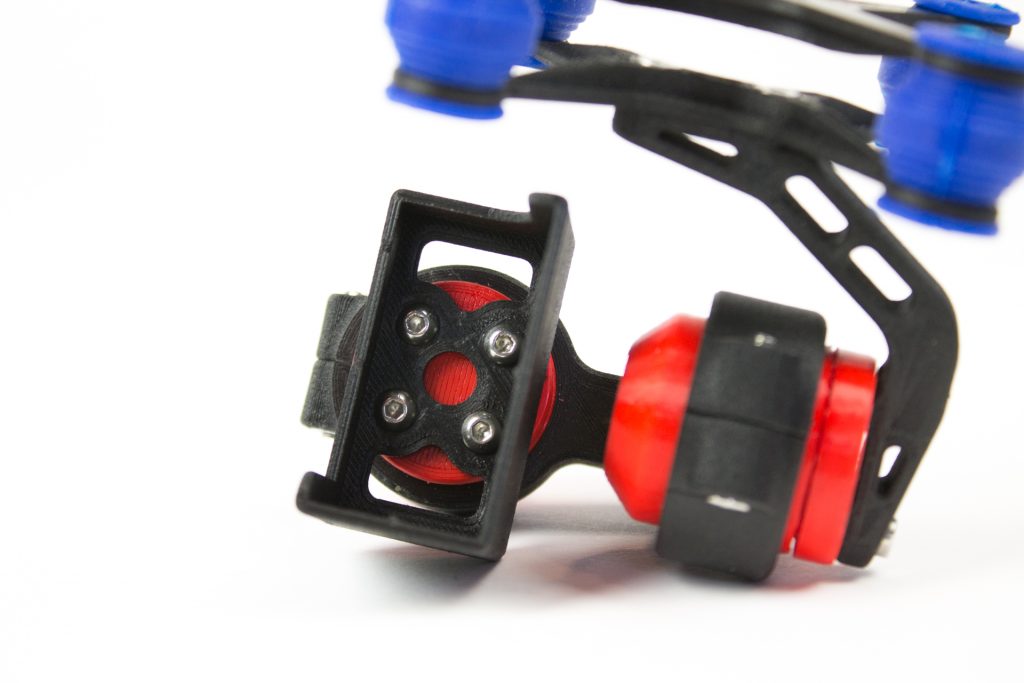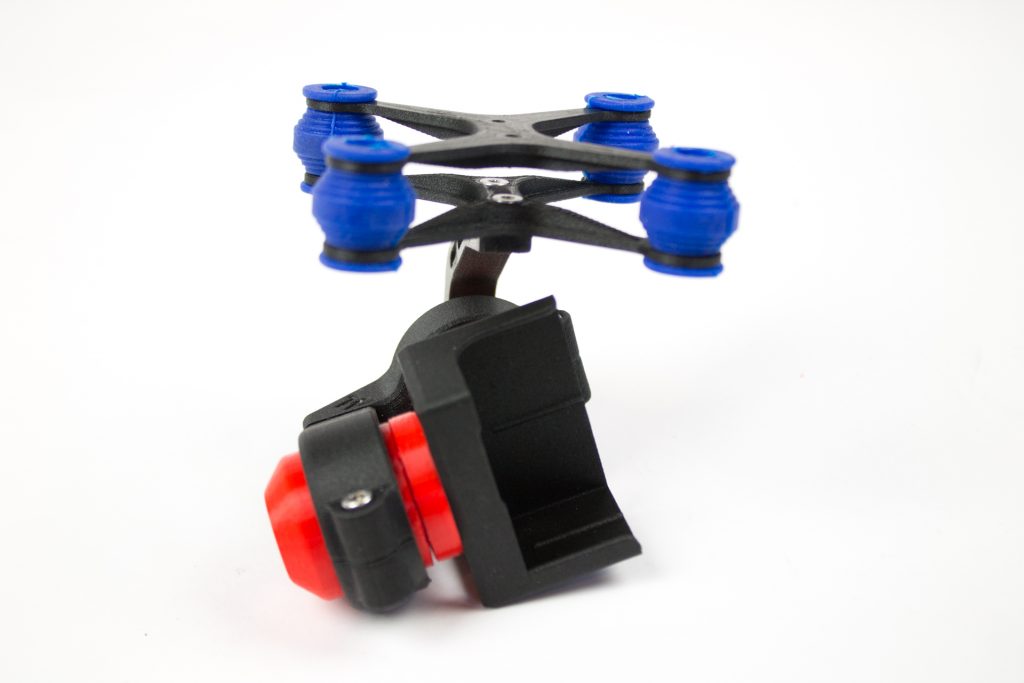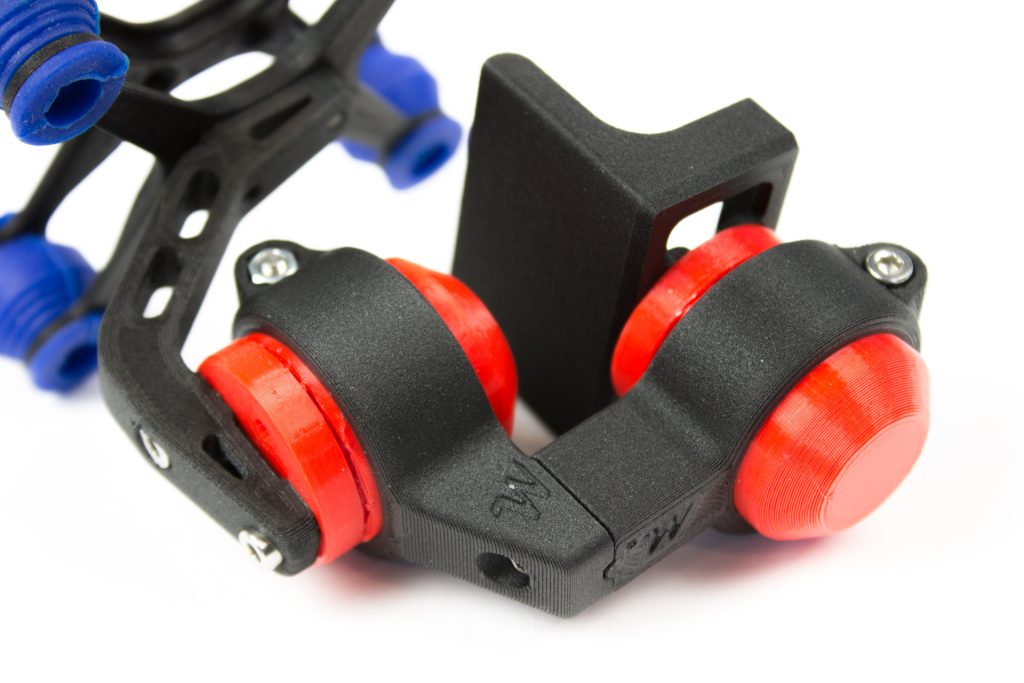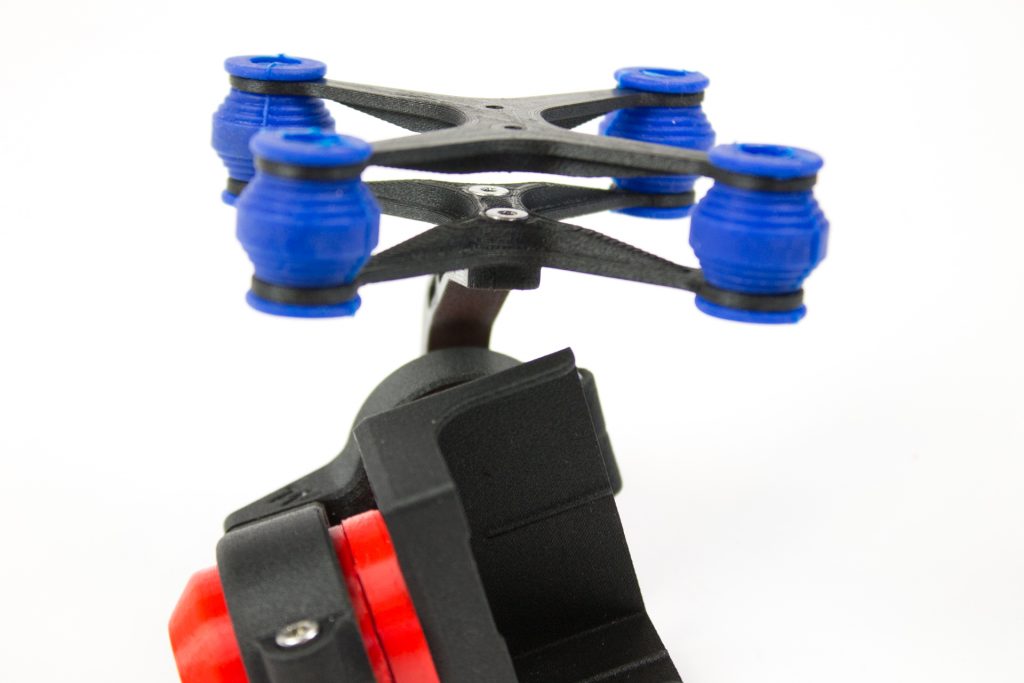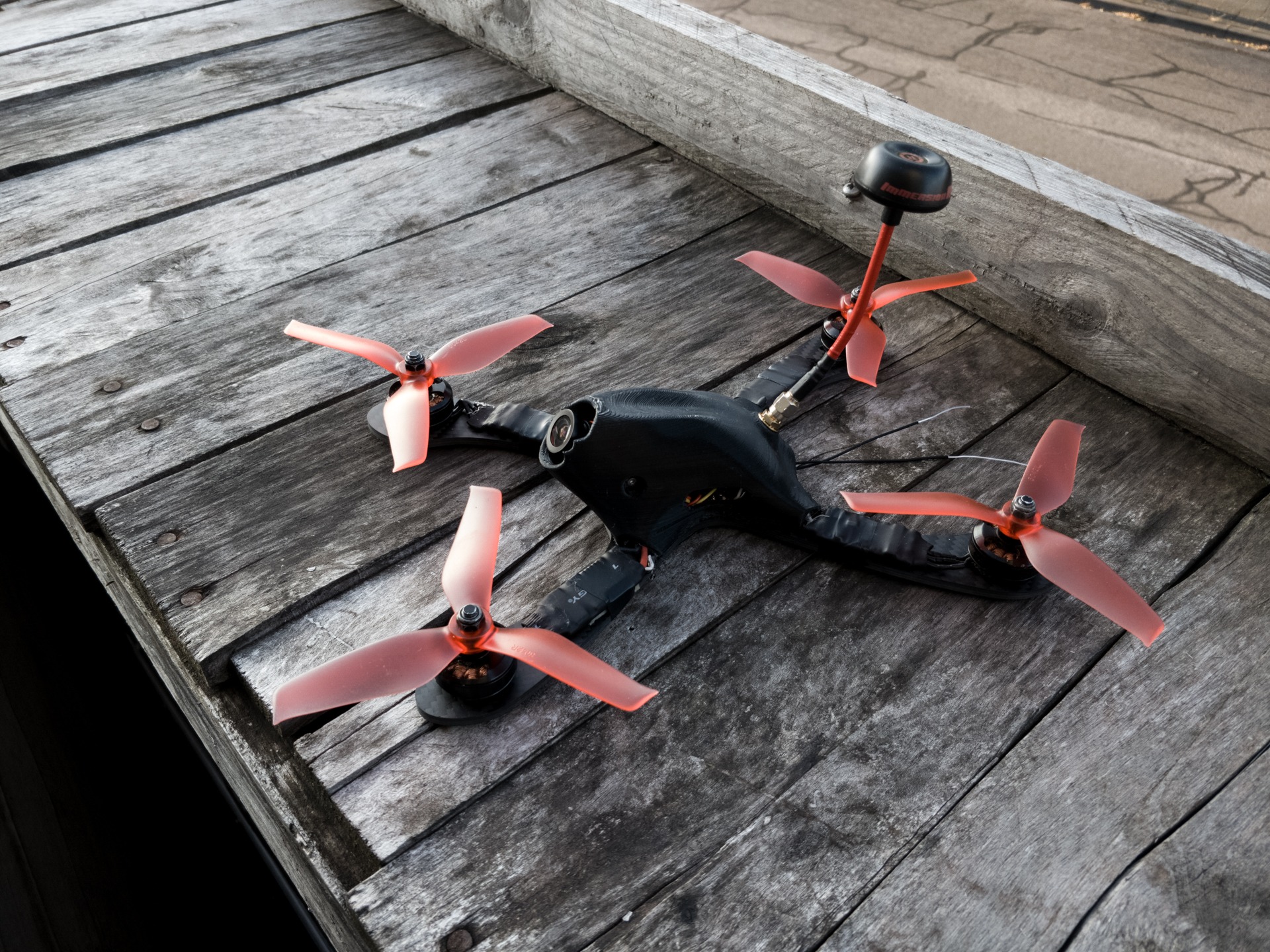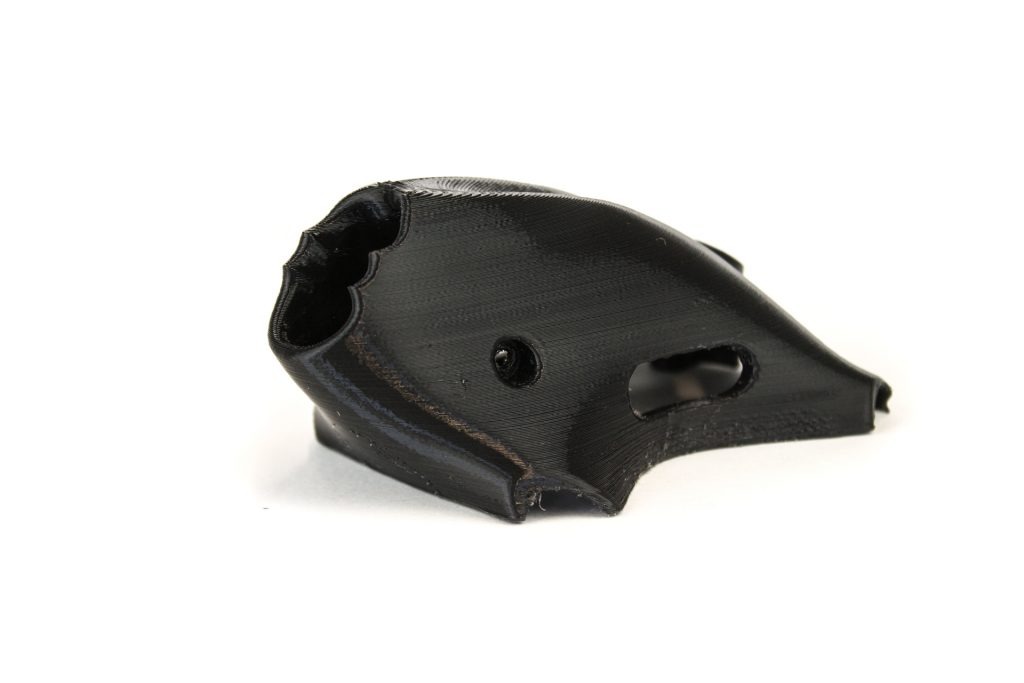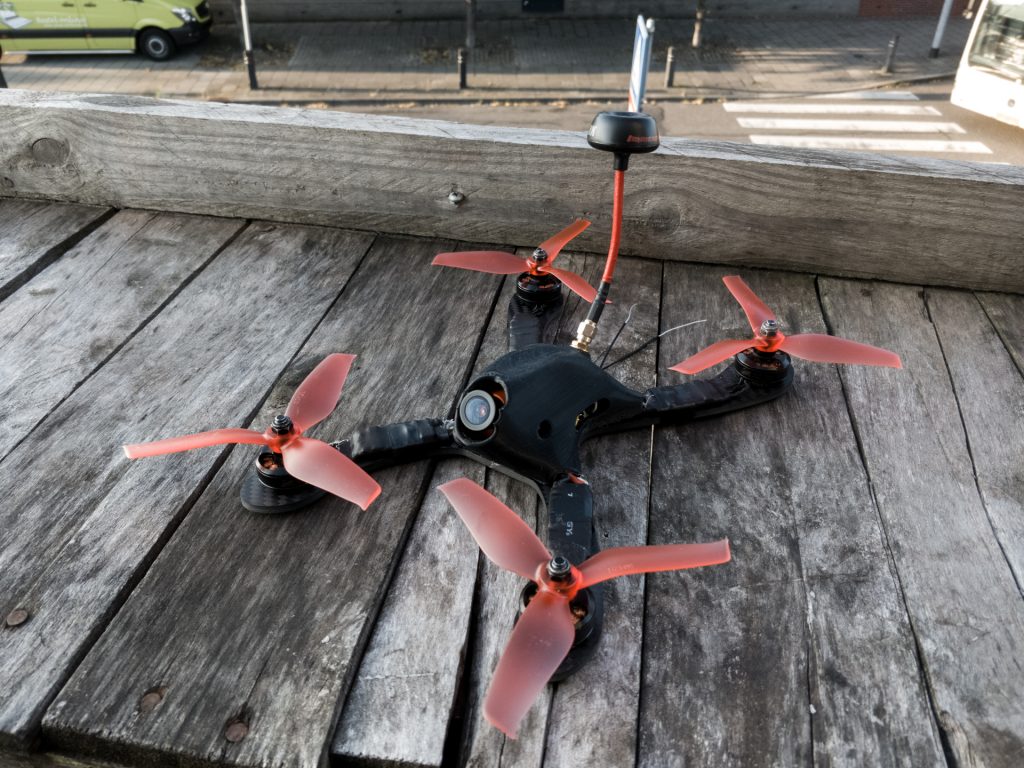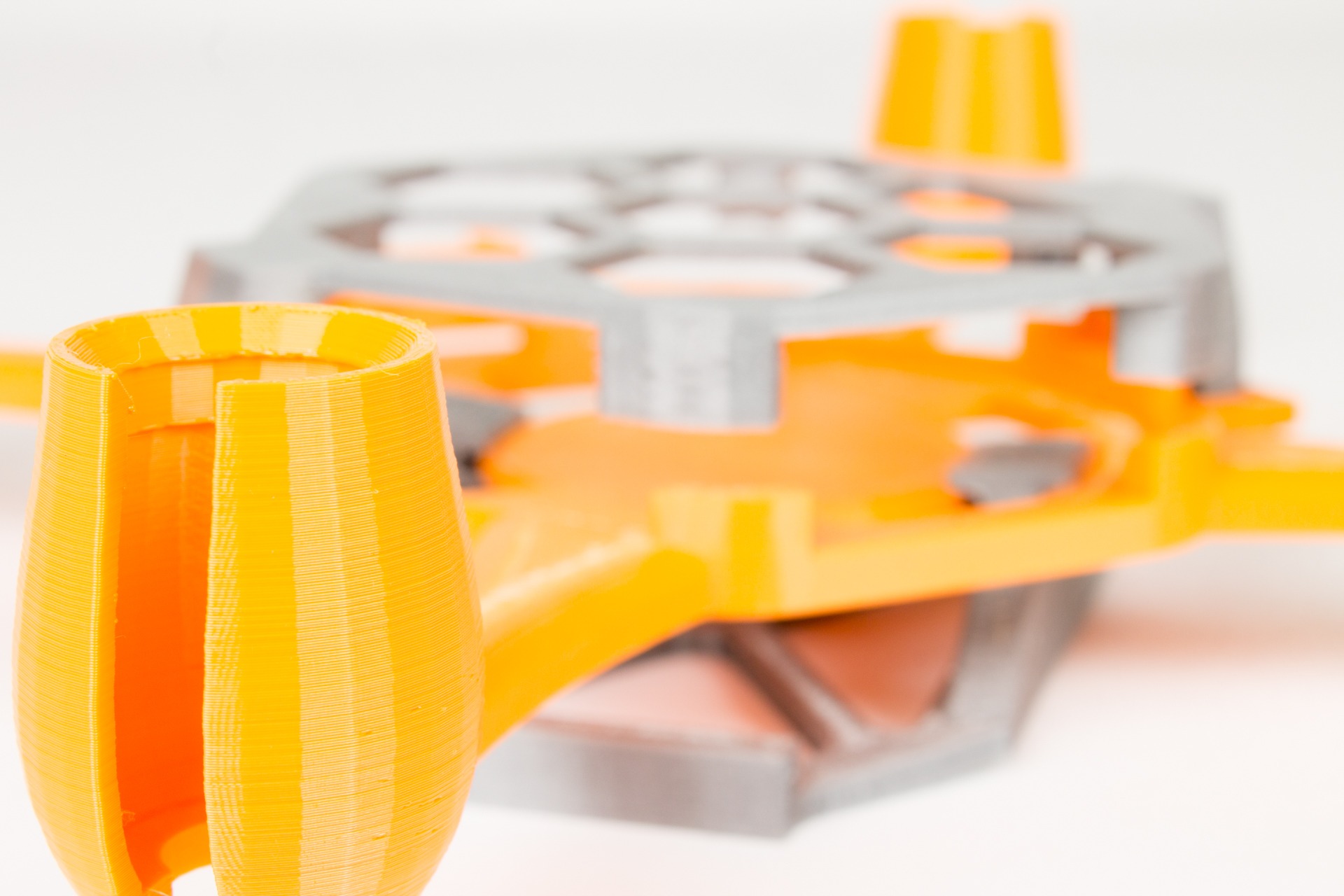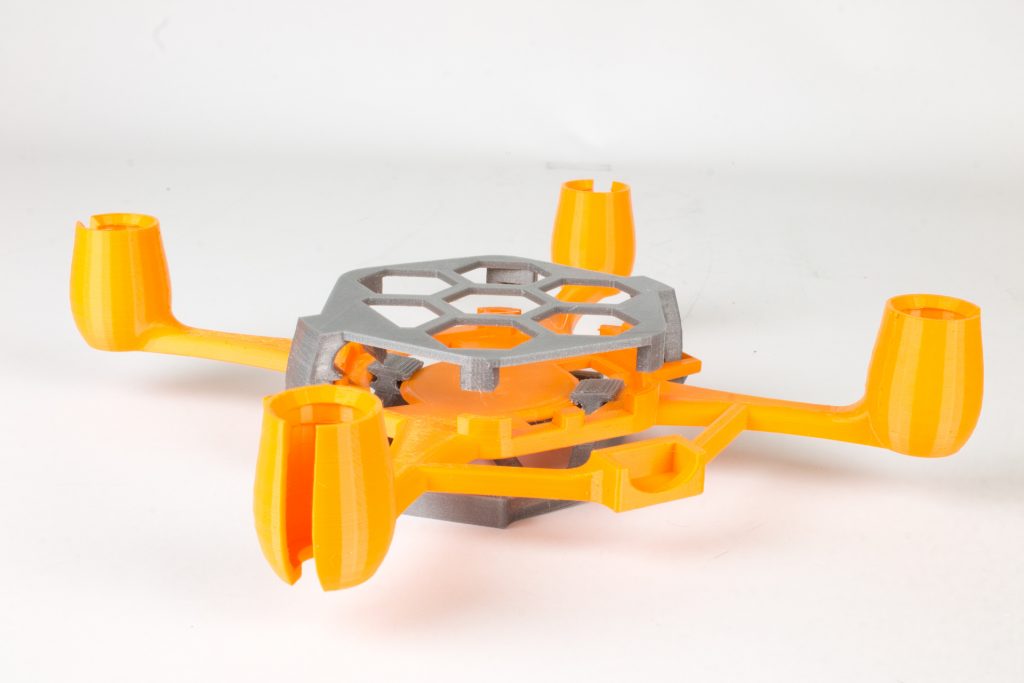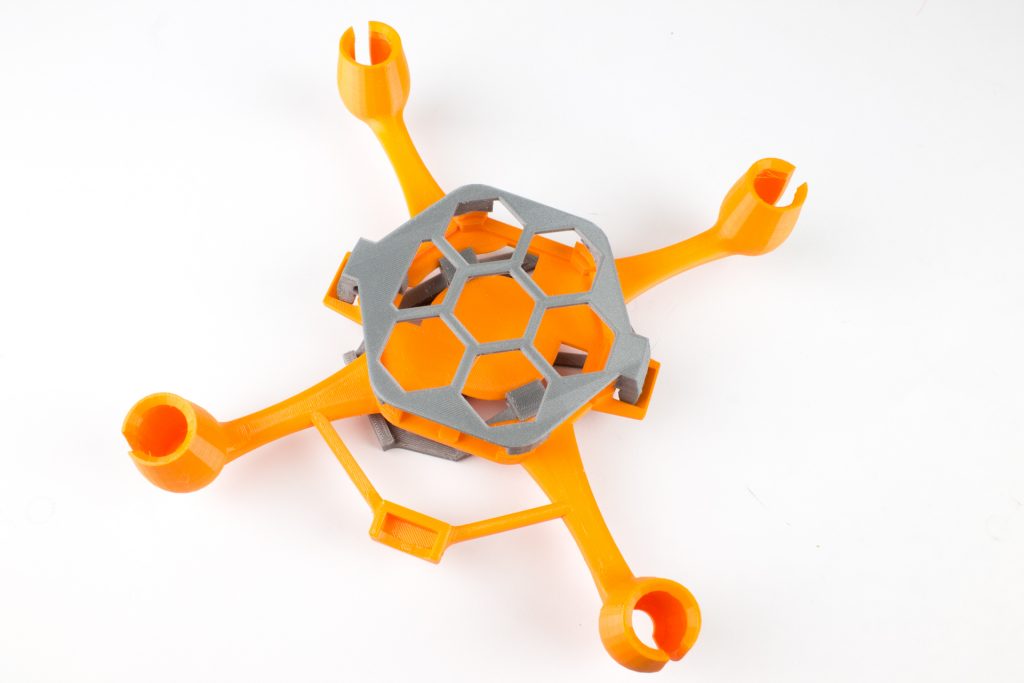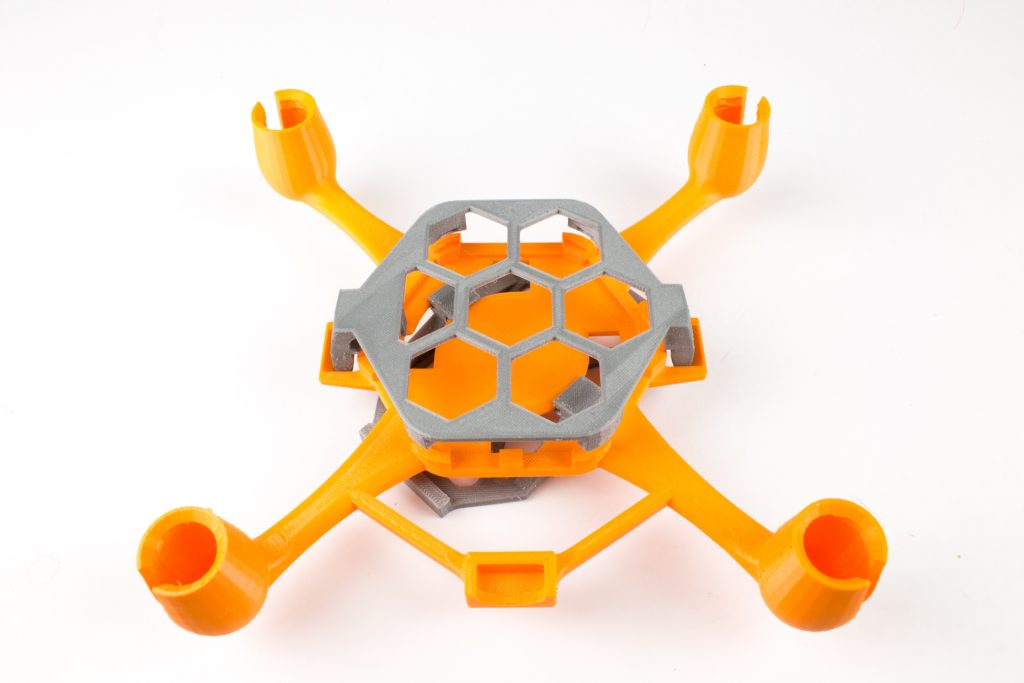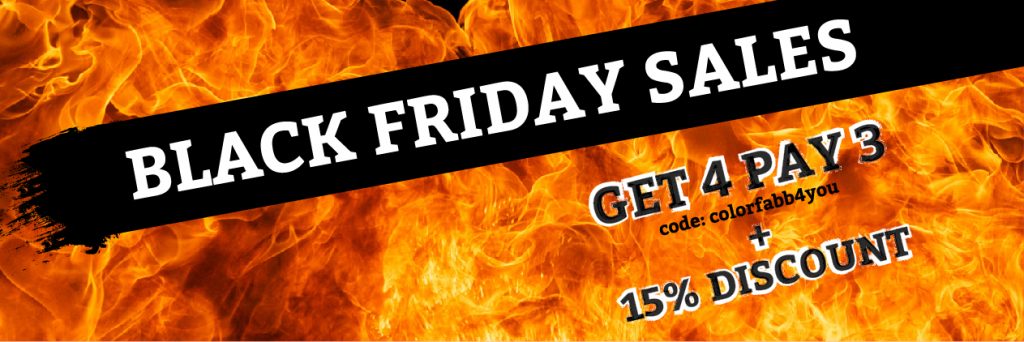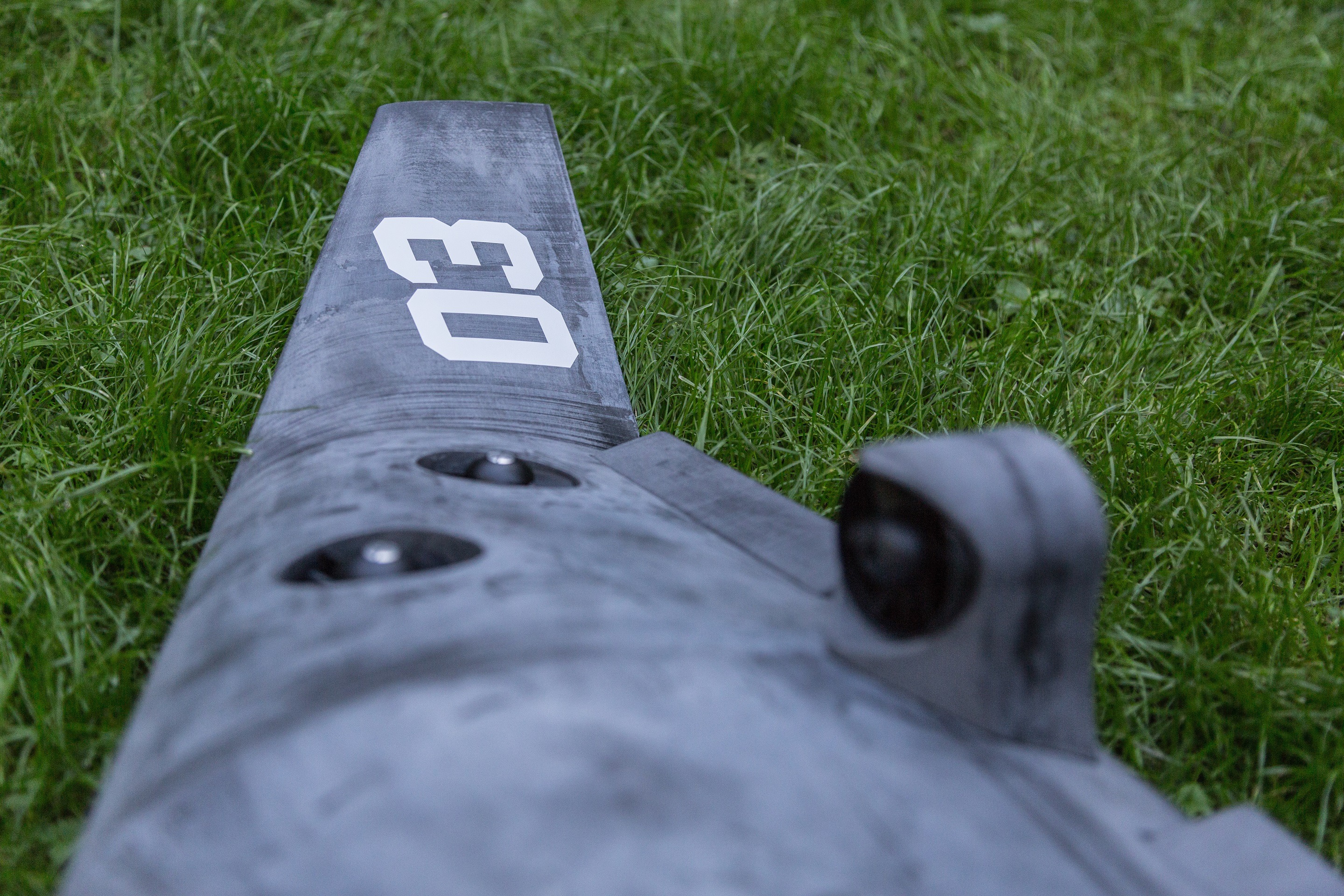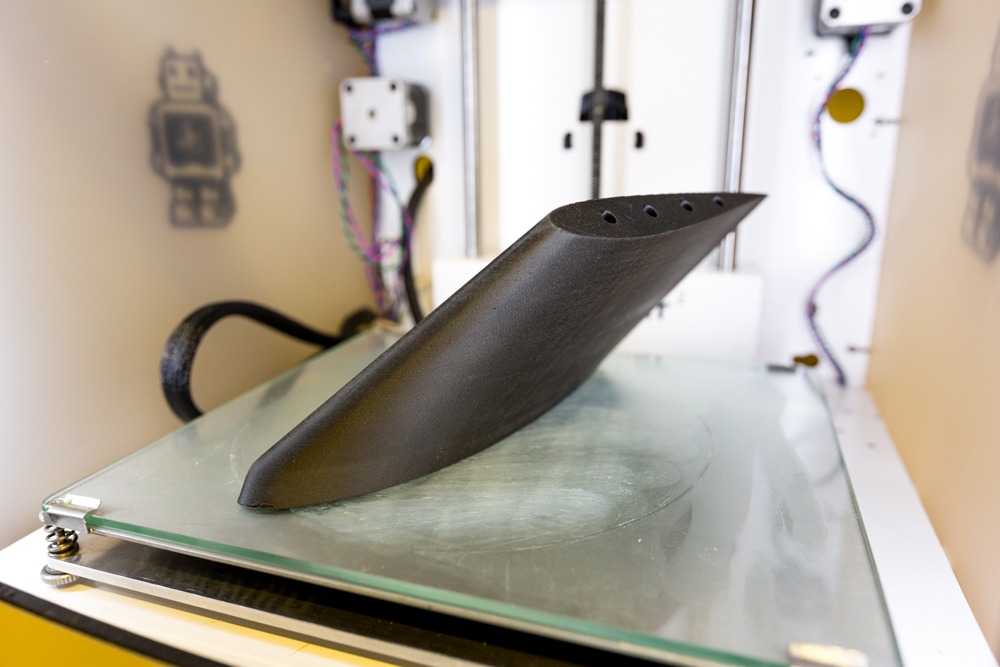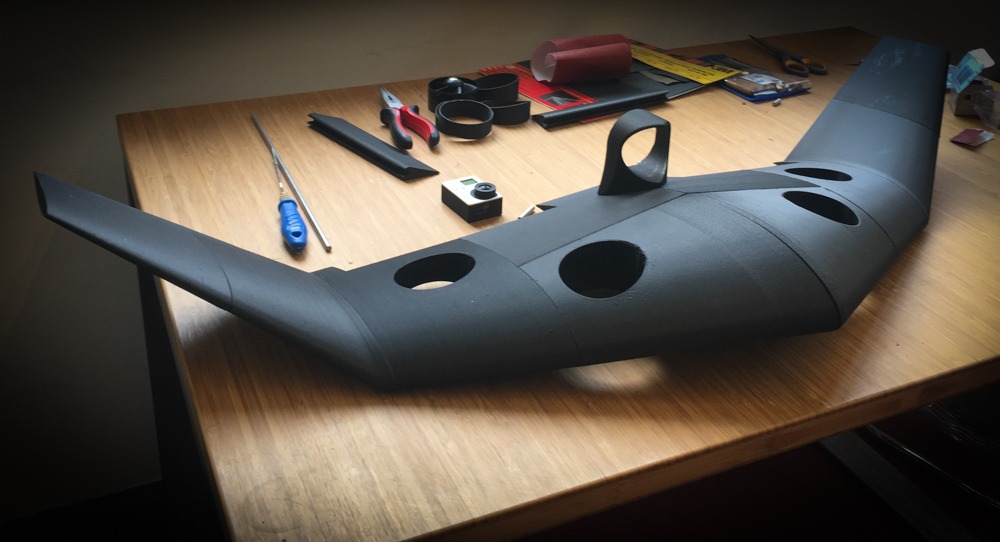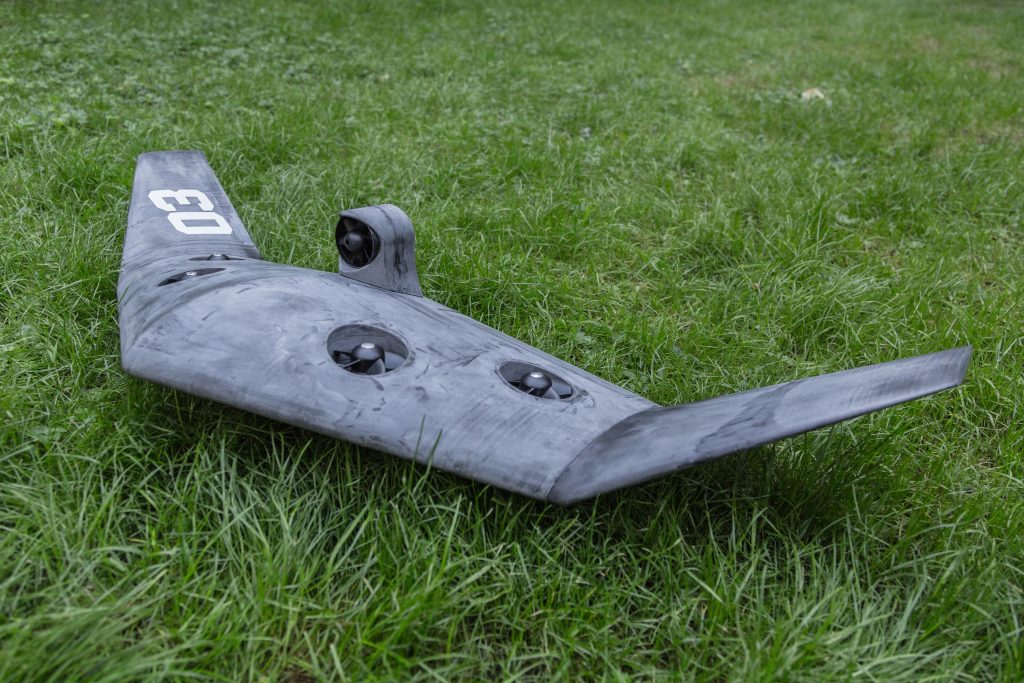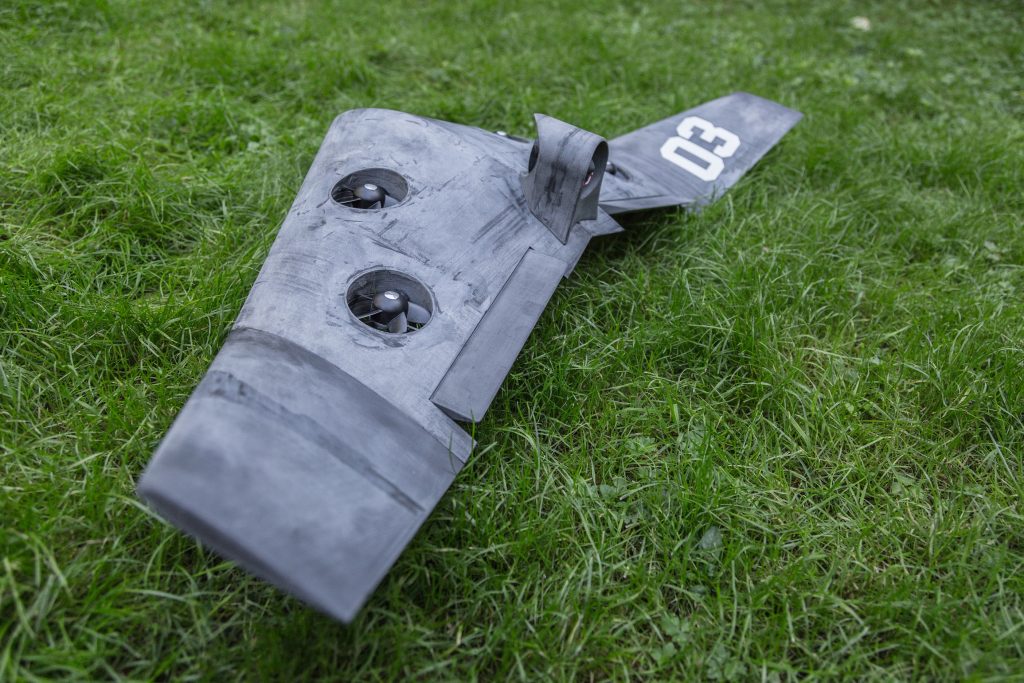November 15 update: Now with video of the first flight! Scroll down to see the spectacular footage!
When we launched our light weight filament LW-PLA earlier this year we saw a lot of handy applications: cosplay, medical instruments, grips. Every print where weight is of the essence. The most positive replies we got were from the drone and RC plane community. One of the companies specialized in RC planes, Eclipson Airplanes from Spain, contacted us and were very interested in our latest offering. During the summer the Eclipson team worked on a light weight plane design specifically made to be printed with LW-PLA. Here is a first look at their Model V plane:
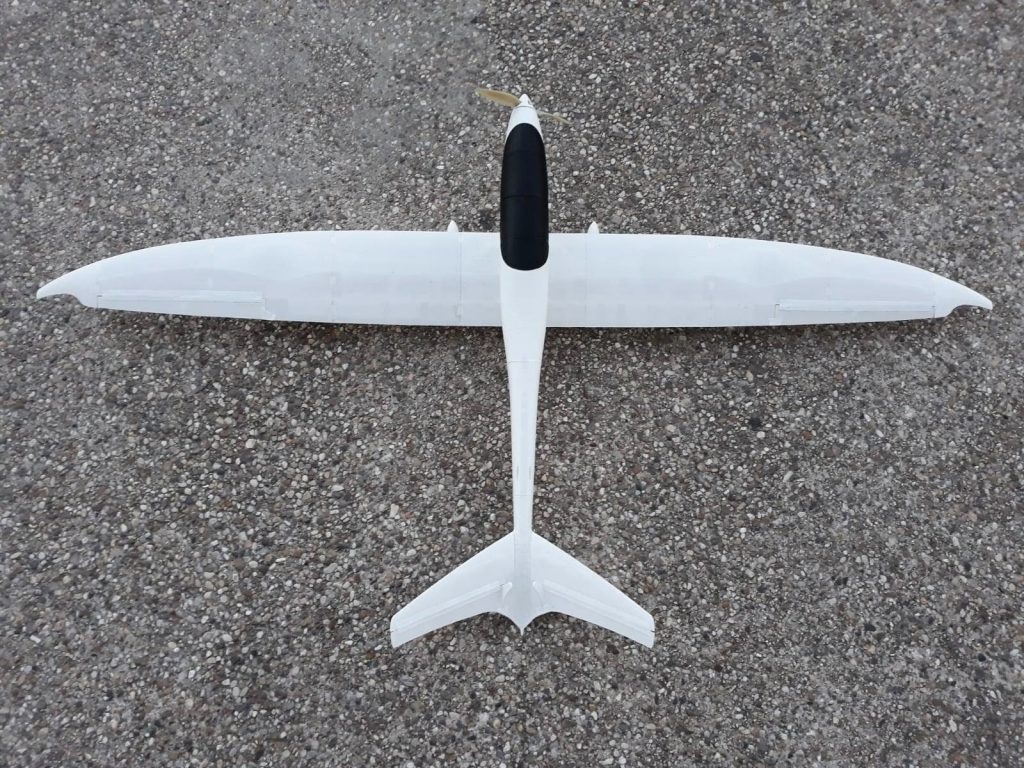
All designs and images by Eclipson Airplanes
A few details about the Model V plane:
- Total weight of the printed parts 170 gr
- Ready to flight weight (estimated) 380 gr
- Wing span 1.370mm
- Wing area 16 dm2
- Wing loading 24gr/dm2
You can find more information about this design on the dedicated Model V page.
“This means that this airplane holds a new world record, it is the lightest RC plane in terms of wing loading.”
- Team Eclipson
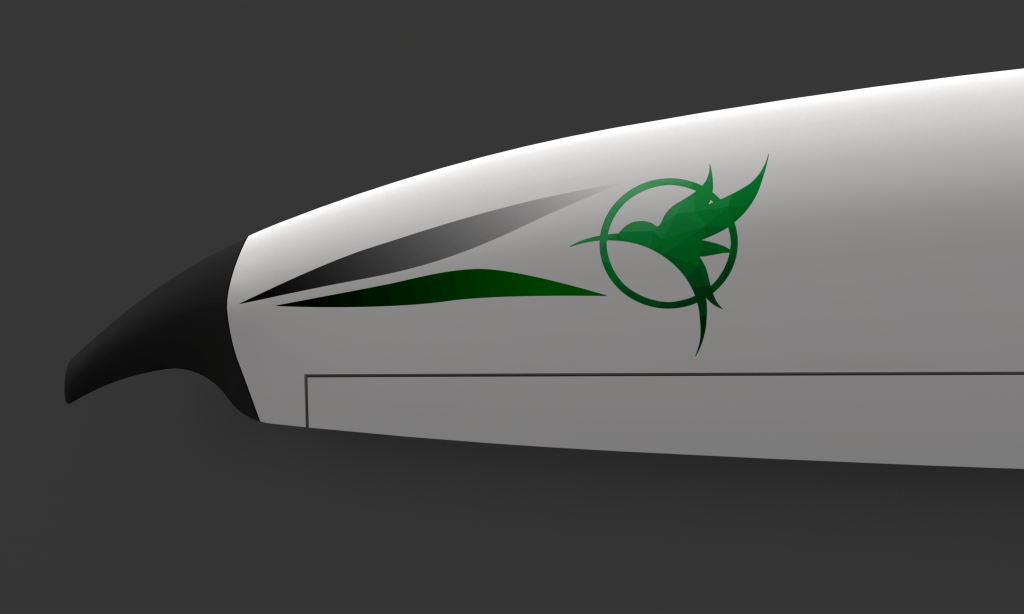
Rendering with Eclipson logo
When printed with regular PLA, the plane would weigh twice as much and as we all know: every gram counts in aviation. As Eclipson states on its homepage:
“Drag and weight are the two main enemies of any flying machine, reduce those two forces to the minimum was one of the main goal of this project since the conceptual phase.
The drag was reduced thanks to its streamlined shapes, clean design, V tail, high aspect ratio or winglets. Special mention deserves the wing, which is simply the best we have ever designed, this wing has a great balance between safety (docile stall characteristic) efficiency (high lift to drag ratio) maneuverability (high roll rate) and strength. Landing gear, tail and wing can be detached from the fuselage allowing you to print only damaged parts in case of crash.”
Not only did the LW-PLA reduce weight significantly, the Eclipson team also found out that LW-PLA worked extremely well for them when printing the landing gear thanks to its flexibility.
The Model V light weight plane will be for sale from Eclipson from mid-October. Keep an eye out for this excellent plane!
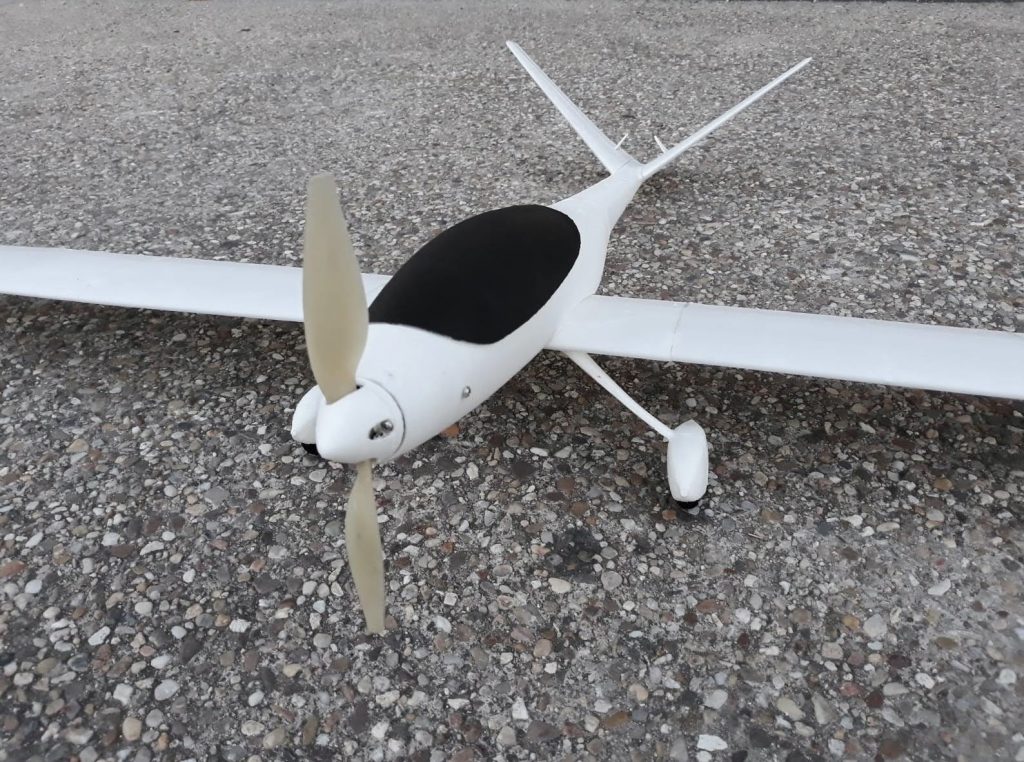
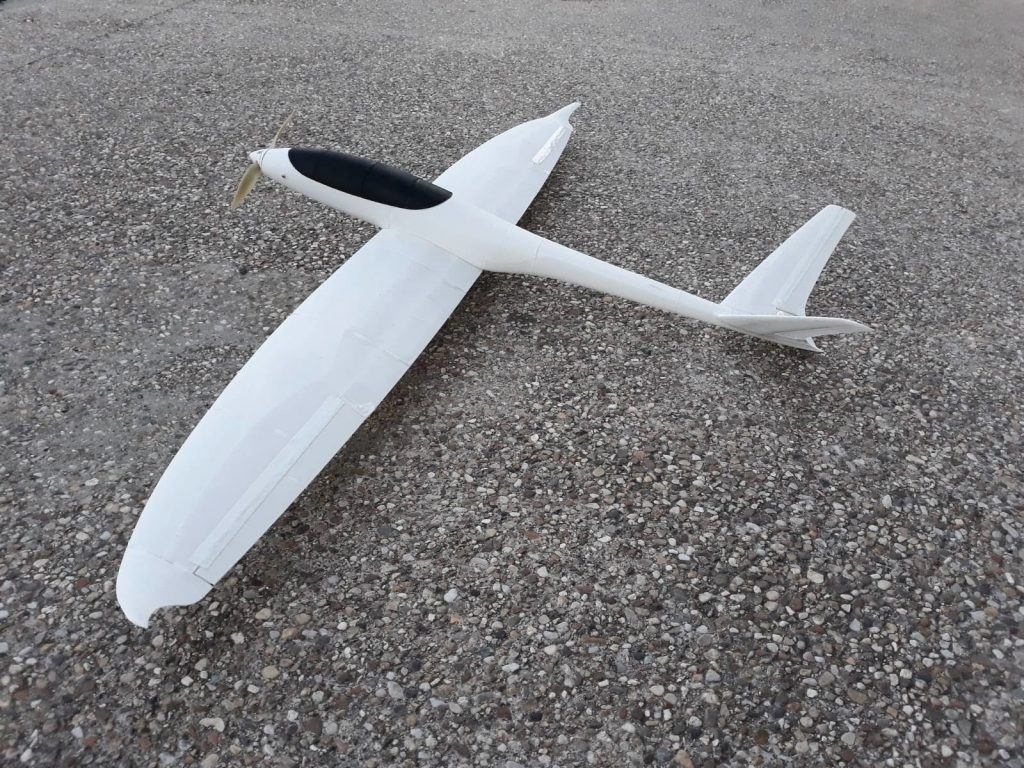
Located in Madrid, Spain, Eclipson Airplanes is specialized in the design of RC Planes and they have already several models available (click here to see their portfolio).
The Model V design is available for purchase at Eclipson (follow this link) and it has already made its maiden flight!
About LW-PLA
LW-PLA is the first filament of its kind using an active foaming technology to achieve lightweight, low density PLA parts. At around 230C this material will start foaming, increasing its volume by nearly 3 times. Users can decrease material flow by 65% to achieve lightweight parts, or use the expanding properties to effectively reduce print time by using big layer heights or single extra thick perimeters.
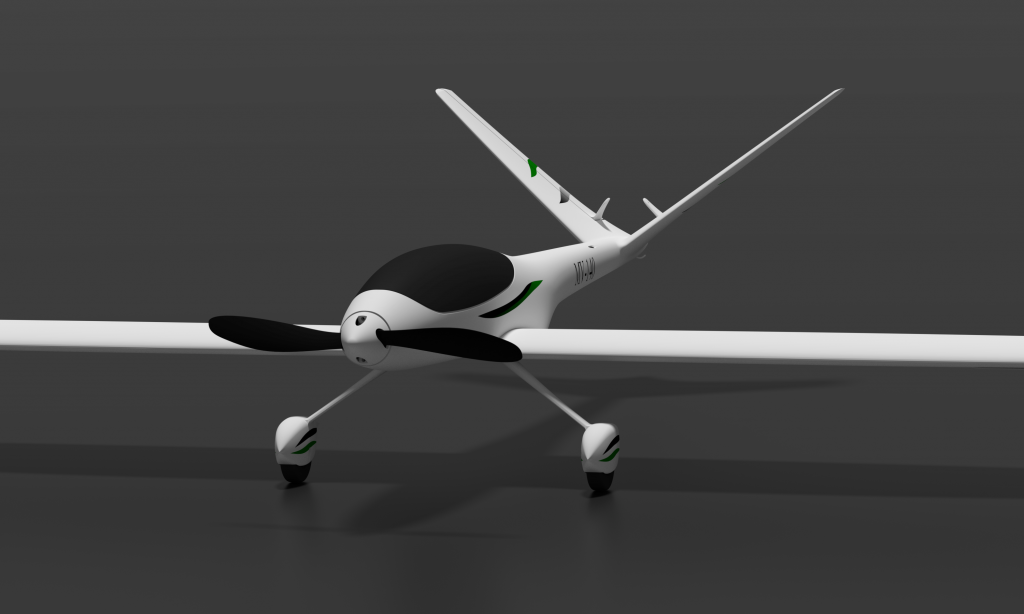
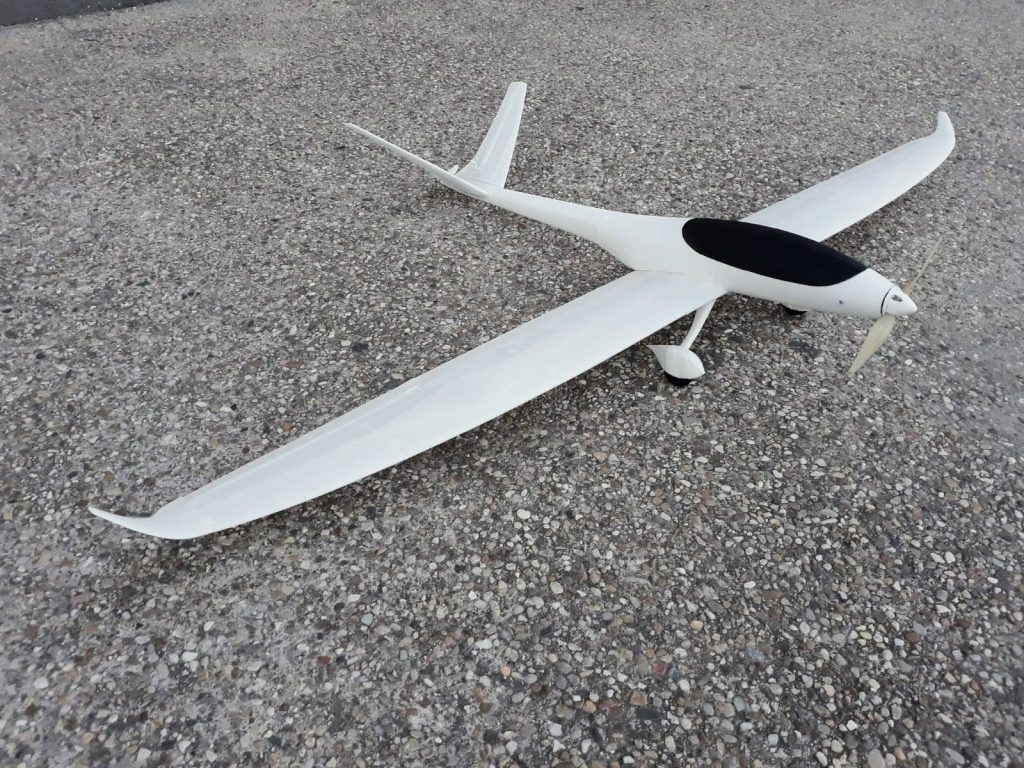
Decreasing flow means using less filament. Therefore users can expect to print 2-3 times more parts using LW-PLA compared to a regular PLA spool. LW-PLA prints in a fantastic matte looking surface finish and is very easy to post process. Any oozing or stringing artifacts rub right off and the surface is easily sanded for a smooth finish. Find out more here.
Curious how to print with LW-PLA? Find out more in our tutorial!
LW-PLA is available in Black and Natural and is available now. We ship daily, worldwide and from stock.
